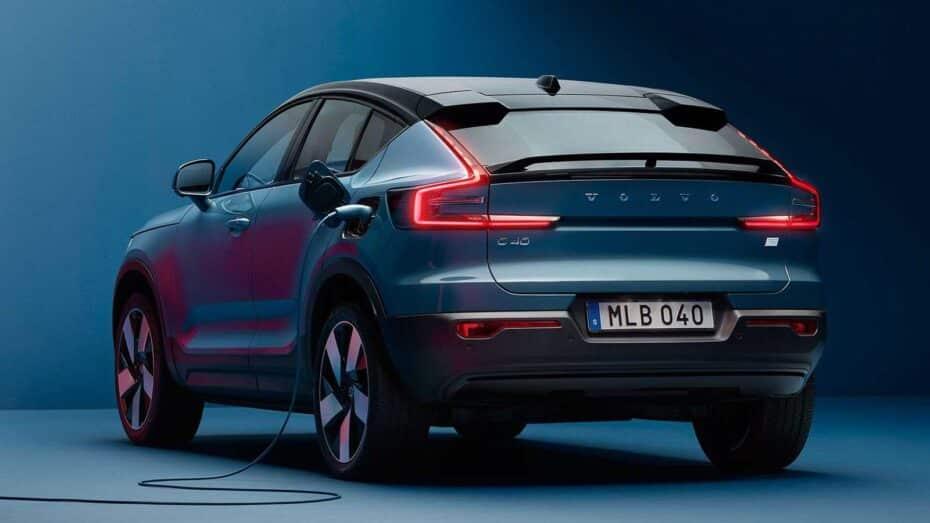If you try an electric car, you will surely change and it is that they work well, they do not sound, their acceleration in certain cases is insane and on top of that, if they tell you that you contribute to the environment being in better shape, there is no doubt to not take the step, or yes?.
As more brands take the step of going electric, more studies show that the electric car has more problems than initially announced.
If we focus on pollution in cities, there is no room for discussion, without smoke from the exhaust pipes, the pollution caused by the car will drop drastically.
An interesting study carried out by Volvo presents a more complex picture of the situation, illustrated by the fact that its XC40 range offers a perfect comparison of the pros and cons of each of the versions, be it EV, PHEV or ICE.
Being all built on shared foundations and in the same factory, Volvo has taken this opportunity to compare the full lifecycle carbon footprint of each type of XC40 from the raw materials and production processes required to make it, power it and drive it for a service life of 200,000 km and then dispose of it at its end.
According to Volvo, building a C40 generates 70% more emissions than building an XC40 with a normal ICE engine despite the fact that both cars are built on the same platform and share many of their parts. In terms of materials and components alone, batteries take the cake.
That means these "green" electric cars arrive at the dealership with a significantly higher CO2 load compared to the regular ICE version you could have bought for much less money. The difference comes once you start driving it since every kilometer you travel in a gasoline car, it burns fuel and increases its CO2 footprint, while the opposite happens in the electric equivalent.

If we add to this the origin of the electricity we use to recharge the electric car and the CO2 footprint of this electricity, the thing can tip the balance much more or much less.
Volvo has published three different figures, according to the average global electricity supply, the projected average of the EU28 that includes regular and renewable sources and fully renewable energy.
Over a lifetime of 200,000 kilometres, the carbon dioxide footprint of a model like the all-electric Volvo C40 is no more than 15% less than that of a petrol-powered Volvo XC40, and before break-even this It must have traveled more than 110,000 km.
And pay attention to this because it is at this moment, right at the balance point, when what is called compensation of the carbon footprint would begin, a process that consists of neutralizing the amount of CO2 emissions emitted by anything manufactured, to start subtracting CO2.
If we take into account that in the average of the 28 European countries - the United Kingdom included - the production of "CO2-free" energy is relatively low, it would be necessary to analyze scenario by scenario and we could say that in the countries with the highest rate of electricity generated free of CO2 we should travel a little over 50,000 km while in countries with less electricity production free of CO2 footprint, this mileage can shoot up to over 150,000 km, a real outrage.
To give you an idea, according to Red Eléctrica Española, the percentage of renewable energy produced today is 37.63% and of all the energy produced in Spain today, 52.42% has been emission-free. Personally, although these are the data, you have to bear in mind that to build wind turbines, solar panels and other renewable systems, CO2 has been emitted, so "CO2-free" energy is somewhat of a chimera - this It is a personal point of view.
A similar study carried out by Mazda offered us at the time the reason why the Japanese brand equipped its electric Mazda MX-30 with a smaller than normal battery, with the aim of reducing cost, weight and progressing to the point CO2 balance and compensation.
Although a smaller battery limits range, Mazda reckons the compromise makes sense for a city-focused product like the MX-30, and will eventually introduce a REX version with a rotary generator for those who need to travel further afield. the city limits.
In conclusion, we can say that although it seems that during its useful life a BEV can have a lower environmental impact than its ICE equivalent, it may not be as simple as stating that electric cars are more ecological, we have to see where that energy comes from. used and estimate the useful life and the final mileage that the car will have at the end of its useful life.
Despite this, Volvo has stated that it is going to become a manufacturer in which the cycle of manufacturing, life and recycling of the vehicle will be CO2 neutral and they will continue betting on this.
Source | Auto Trader – Volvo – Mazda


